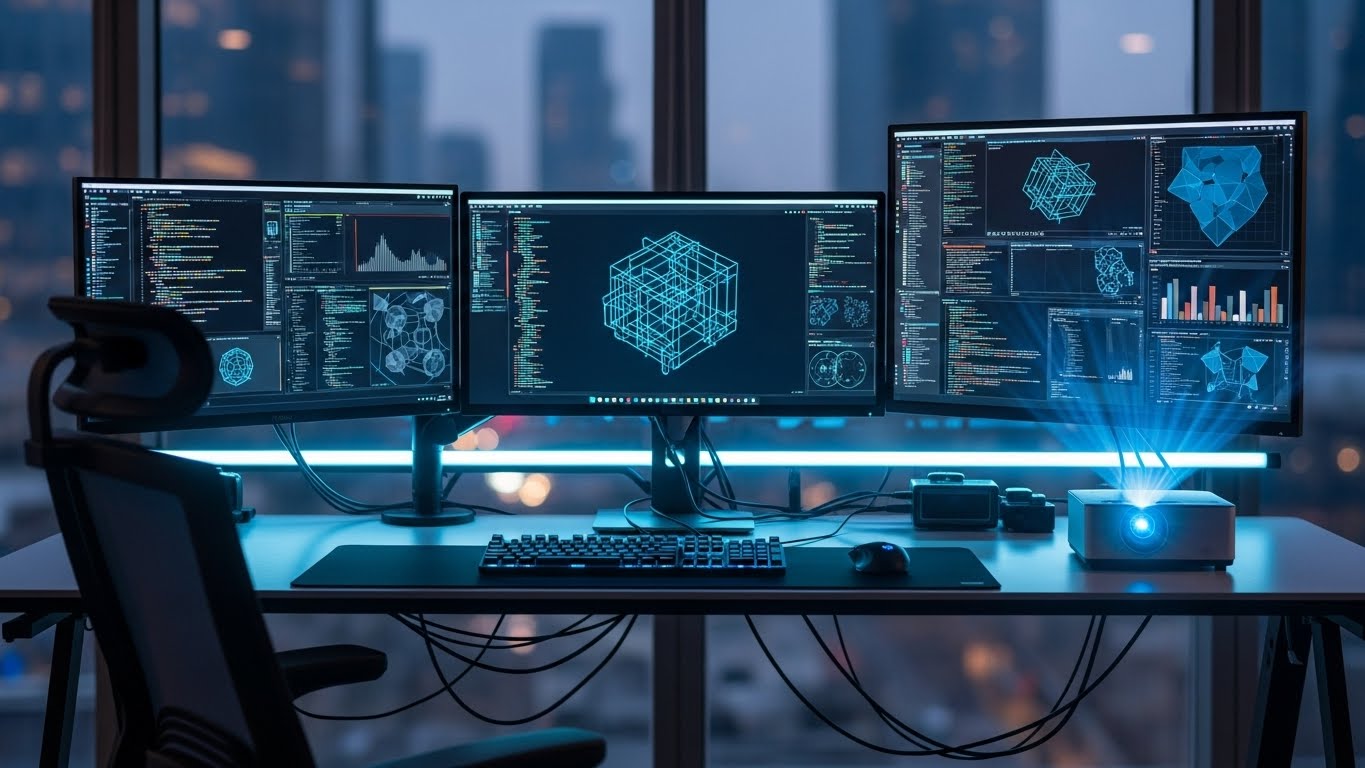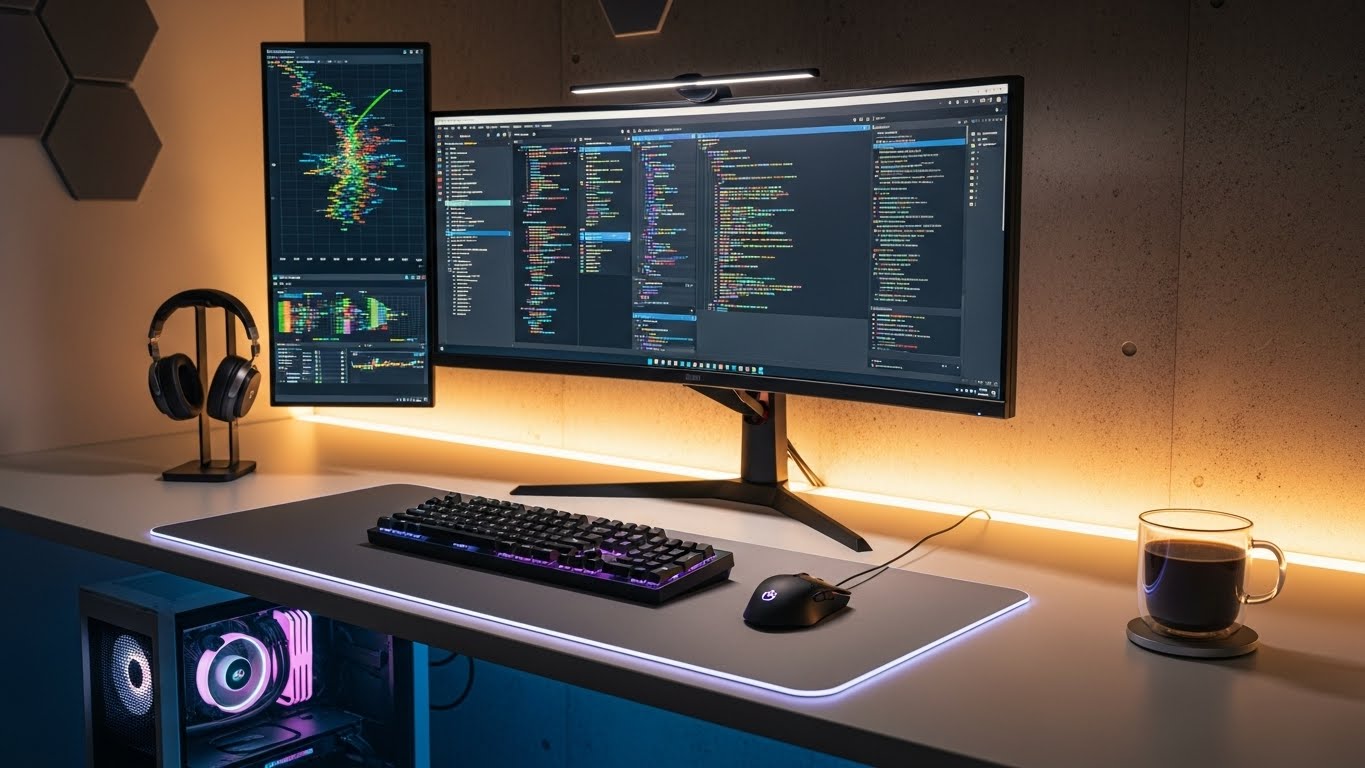In the blink of an eye, technology has evolved from a helpful tool to the driving force behind nearly every facet of our lives. Whether it’s revolutionizing industries, changing the way we communicate, or influencing our daily routines, technology is increasingly becoming an inseparable part of the modern world. But the question that many are asking today is: what’s next? As emerging technologies continue to advance at breakneck speed, we are beginning to glimpse a future that is fundamentally different from anything we’ve known. This blog explores some of the most exciting tech innovations and how they are poised to transform our future.
The Age of Artificial Intelligence: A Step Toward Autonomy
Artificial Intelligence (AI) is no longer just a futuristic concept; it is embedded in our everyday lives. From voice assistants like Siri and Alexa to advanced machine learning algorithms that power recommendation engines on platforms like Netflix, AI is increasingly influencing how we interact with technology. But the real revolution lies in AI’s potential to solve complex, real-world problems.
In fields like healthcare, AI is proving to be a game-changer. Machine learning algorithms are being trained to detect diseases early, sometimes even before human doctors can make a diagnosis. In industries like transportation, AI is being used to develop autonomous vehicles that could radically change how we move and deliver goods. Moreover, AI’s ability to process vast amounts of data in real-time allows it to provide insights that were once unattainable, making it a powerful tool for decision-making across industries.
However, as AI continues to mature, it raises important ethical questions regarding privacy, job displacement, and the responsible use of technology. Balancing innovation with ethical responsibility will be key in shaping how AI impacts society moving forward.
Quantum Computing: Redefining What’s Possible
While traditional computers process information as binary data (0s and 1s), quantum computers harness the strange, mind-bending principles of quantum mechanics to perform calculations far beyond the reach of today’s systems. Quantum computing promises to revolutionize industries by solving problems that would take classical computers millennia to solve—problems related to cryptography, materials science, and even climate change.
For instance, quantum computers could simulate chemical reactions at a molecular level, opening up the possibility of breakthroughs in drug discovery and energy efficiency. Additionally, they could be used to optimize everything from supply chains to financial portfolios in ways that classical computers simply cannot.
Though quantum computing is still in its early stages, progress is being made. Companies like IBM, Google, and startups around the world are working tirelessly to build practical quantum systems. The technology promises to be as disruptive as it is complex, and the next decade will likely see quantum computing evolve from a theoretical concept to a revolutionary tool that transforms industries.
Blockchain Beyond Cryptocurrency: Unlocking New Possibilities
Blockchain, the decentralized and secure technology behind cryptocurrencies like Bitcoin, is making waves far beyond the financial sector. At its core, blockchain is a distributed ledger technology that allows for transparent, tamper-proof record-keeping across a decentralized network. While it gained initial popularity in cryptocurrency markets, its applications are now spreading to numerous industries.
For example, blockchain’s transparency and security features make it ideal for supply chain management. By recording every step of the production process on a blockchain, companies can ensure the authenticity of their products and trace them from raw materials to finished goods. Similarly, blockchain is transforming the healthcare sector by enabling secure sharing of patient data between medical institutions while maintaining privacy and security.
In addition to security and transparency, blockchain can enable “smart contracts”—self-executing contracts that automatically fulfill agreements when predefined conditions are met. This can eliminate intermediaries in various industries, from real estate to insurance, making processes faster, cheaper, and more reliable.
While challenges like scalability and energy consumption still exist, the future of blockchain looks promising as it finds new applications that could fundamentally alter how industries operate.
The Internet of Things (IoT): Building a More Connected World
The Internet of Things (IoT) refers to the network of physical devices that are connected to the internet and can communicate with each other. From smart thermostats and fitness trackers to connected cars and industrial machinery, IoT is creating a world where everything—from household appliances to entire cities—is becoming interconnected.
For consumers, IoT means greater convenience and efficiency. Smart homes, for instance, allow people to control their lights, security systems, and even refrigerators remotely, making everyday tasks easier and more efficient. In healthcare, IoT-enabled devices like wearables are providing real-time data on everything from heart rate to sleep patterns, enabling both individuals and doctors to monitor health in ways that were previously impossible.
But IoT also has the potential to make industries more efficient. In agriculture, for example, IoT sensors can monitor soil moisture and crop health, helping farmers optimize water usage and increase yields. In manufacturing, IoT-enabled machines can self-diagnose and schedule maintenance, reducing downtime and improving productivity.
As IoT continues to grow, so too does the complexity of managing millions of interconnected devices. Security and privacy concerns remain paramount, and addressing these challenges will be crucial for the continued success of IoT technologies.
5G: The Backbone of Tomorrow’s Connectivity
The rollout of 5G networks is expected to change the way we connect to the internet. With speeds up to 100 times faster than 4G, 5G will enable near-instantaneous communication between devices, making it a vital technology for emerging innovations like autonomous vehicles, augmented reality, and smart cities.
One of the most exciting possibilities with 5G is its ability to support the massive growth of IoT. With its ultra-low latency and high bandwidth, 5G will make it possible for billions of devices to communicate seamlessly in real-time. For industries like healthcare, this means real-time remote surgeries, where a surgeon can operate on a patient from across the globe with minimal delay. For autonomous vehicles, 5G will enable communication between cars, traffic lights, and even pedestrians, significantly improving safety and efficiency.
Despite the promise, 5G is not without its challenges. Building the infrastructure for a global 5G network is an enormous undertaking, and there are concerns about the potential health effects of 5G radiation, although current research suggests no conclusive evidence of harm. Nevertheless, 5G will undoubtedly be a driving force behind future tech innovations and the next generation of connectivity.
Virtual Reality (VR) and Augmented Reality (AR): Blurring the Lines Between Real and Virtual
Virtual Reality (VR) and Augmented Reality (AR) are two technologies that are fundamentally changing how we experience the world around us. VR immerses users in entirely digital environments, while AR overlays digital elements on the real world, enhancing the user’s experience of their surroundings.
In entertainment, VR has revolutionized gaming, offering users the chance to step into entirely new worlds. AR, popularized by games like Pokémon Go, allows users to interact with digital objects in the real world. These technologies are also making their way into other industries, including education, where VR is used to create immersive learning experiences, and healthcare, where AR is being used to assist surgeons during complex procedures by overlaying important data onto their field of view.
As both VR and AR technologies mature, the line between the digital and physical worlds will continue to blur. Whether it’s attending a virtual concert, exploring a historical site in 3D, or collaborating with colleagues in a virtual office, VR and AR have the potential to reshape how we work, play, and learn.
Sustainability in Tech: Building for the Future
As we continue to innovate and advance in technology, one of the most pressing concerns is sustainability. The tech industry is a major consumer of energy, and the environmental impact of data centers, electronic waste, and the production of gadgets cannot be ignored.
However, there is a growing push toward more sustainable practices in tech. Companies like Google, Apple, and Microsoft are leading the way in powering their data centers with renewable energy and reducing their carbon footprints. Meanwhile, new technologies like energy-efficient chips and biodegradable materials are helping to reduce e-waste and make tech products more sustainable.
The future of tech is not just about pushing the boundaries of innovation; it’s also about ensuring that the innovations we create today do not harm the planet we depend on. As tech continues to evolve, sustainability must be a core consideration for every new development.
Conclusion: A Tech-Driven Future Awaits
We are living in an extraordinary time where technology is advancing faster than ever before, transforming industries and impacting every aspect of our daily lives. From AI and blockchain to quantum computing and IoT, the innovations of today are laying the groundwork for the technologies of tomorrow. While challenges like security, privacy, and sustainability remain, the potential of these technologies to improve our lives and solve global challenges is immense.
As we move forward, it is crucial that we harness these innovations responsibly, ensuring they benefit society as a whole. The future of tech holds endless possibilities, and by embracing both innovation and ethical responsibility, we can build a future where technology truly serves humanity.



